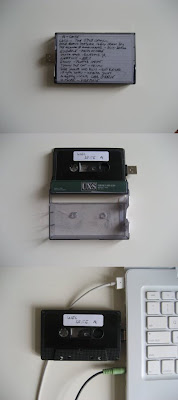 My parents used to tell me when I was a child that modesty is a virtue and we should not show excessive pride and self-satisfaction in our achievements.
My parents used to tell me when I was a child that modesty is a virtue and we should not show excessive pride and self-satisfaction in our achievements.However, I, as a little boy, just didn't understand, if modesty is a virtue, why people displayed their award certificates, banners or medals in their offices and drawing rooms and even had 'winner of certain stuff' printed on their business card.
I suppose, although modesty is a virtue, it is quite appropriate to let others know that our efforts has met with success. It is also important to remind others that we are formally recognised for something we have achieved and reliable in the field of a particular profession so that they may seek help from us when necessary.
I have taught at National Taiwan University for three terms since Spring 2008. Adjunct assistant professor as I am, I spend a lot of time in course planning, updating course content and offering students instructive guidance. Sometimes Fanne even complains that I spend far more time with students than with her.
However, hard work pays off. The course I offered in Autumn 2008, 'Musical Cultures Around the Globe', is selected as 'distinguished general education course, autumn 2008'. I received an award certificate from the university president yesterday and then gave a presentation on my course design and teaching approaches.
I've never received any award in public since I left primary school, nor have I ever dreamed that I would received an award after I become a 'teacher'. Although mum would probably say that I should be modest about this, I just want to say that modesty is a virtue but it's good to be recognised.
 Since I met Häagen-Dazs, the ice cream, more than 20 years ago, I have held a firm belief, without conscious reasoning and supportive evidence, that it is imported from Denmark. Not until yesterday did I learn that it has actually no connection with any Scandinavian country, nor is the brand name of any Scandinavian origin.
Since I met Häagen-Dazs, the ice cream, more than 20 years ago, I have held a firm belief, without conscious reasoning and supportive evidence, that it is imported from Denmark. Not until yesterday did I learn that it has actually no connection with any Scandinavian country, nor is the brand name of any Scandinavian origin.




